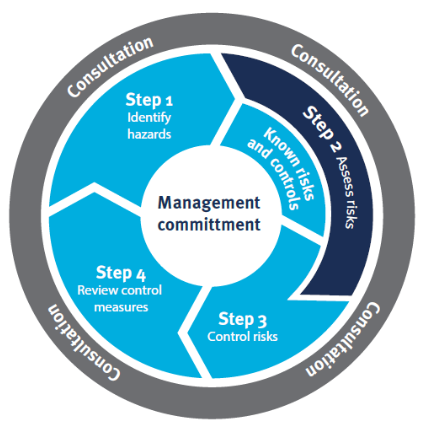Every business, regardless of its size, has a responsibility under the Work Health and Safety Act 2012 (SA) to stop anyone from being killed, injured or becoming ill because of a workplace or the work being done.
A workplace can be any place where work is carried out for a business or undertaking, and could include a work vehicle or a client’s home. The law says that everyone working or coming into a workplace has a legal responsibility to look after their own health and safety, and health of others at the workplace.
Workers must not deliberately put themselves or anyone else in danger and must obey any instructions that their employer gives them about health and safety.
SafeWork SA considers psychosocial hazards to be a workplace health and safety issue as they can create physical or psychological risk to worker health and safety.
What are psychosocial hazards and factors?
Psychosocial hazards and factors are anything in the design or management of work that increases the risk of work-related stress. A stress response is the physical, mental and emotional reactions that occur when a worker perceives the demands of their work exceed their ability or resources to cope. Work-related stress, if prolonged and/or severe, can cause both psychological and physical harm.
Common psychosocial hazards and factors include:
- high or low job demand
- poor support
- poor organisational change management
- poor organisational justice
- violent or traumatic incidents
- poor environmental conditions
- low job control
- low role clarity
- poor workplace relationships
- reward and recognition
- remote or isolated work.
It is good business practice to proactively risk manage by identifying, assessing and controlling psychosocial hazards and factors within the workplace.
A mentally healthy workplace does not happen by chance or guesswork. You have to think about what could go wrong at your workplace and what the consequences could be.
Then you must do whatever you can (in other words, whatever is ‘reasonably practicable’) to eliminate or minimise psychological health and safety risks arising from your business or undertaking.
This process is known as risk management and to properly manage risks, a person must:
1. Identify hazards
2. Assess risks
3. Control risks
4. Review control measures to ensure they are working as planned

The four-step risk management process.
There are many benefits of a risk management approach
A risk management approach can assist in eliminating or minimising the risk of exposure to workers so far as is reasonably practicable. The benefits of doing so include:
- reduction in
- absenteeism
- incidents
- workers compensation claims
- staff turnover
- recruitment and training costs due to increase staff retention
- customer complaints
- positive working environment
- increased job satisfaction – good morale
- possible increase in productivity
- sound decision making
- improved communication
- loyalty to the workplace.
When left unmanaged, the result of exposure to unmanaged work-related stress can include:
- mental health conditions (e.g. anxiety, depression, post-traumatic stress disorder)
- physical injury or illness (e.g. musculoskeletal disorders, cardiovascular conditions)
- poor health behaviours (e.g. smoking, increased alcohol intake, reduced physical activity).
Small businesses that employ workers need to consider the risks inherent within the job and apply risk management principles to eliminate or minimise these risks.
More information
To obtain more information on how to create and maintain a mentally healthy workplace, visit
www.safework.sa.gov.au/workers/health-and-wellbeing/mental-health
Download the Psychological health for small business guide
Work Health and Safety (Psychosocial Risks) Amendment Regulations 2023
https://www.healthyworkplaces.sa.gov.au/designed-for-you/for-small-business




